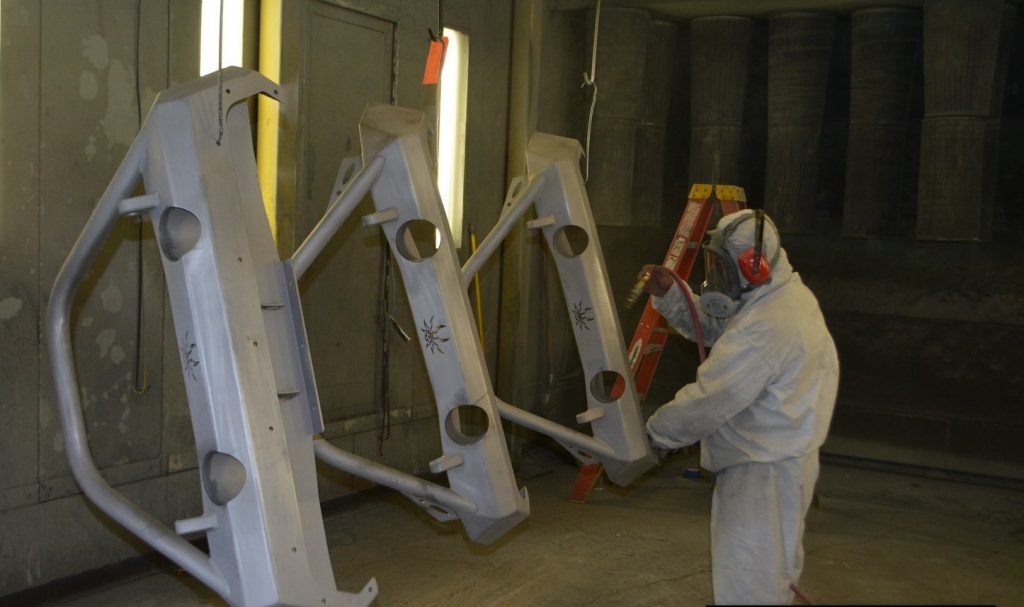Powdercoating has been around since the 1960s. It’s a proven process for providing a durable, great-looking finish to a variety of products, and is especially popular in the car and truck markets. In fact, powdercoating is a key component in Poison Spyder’s “Spyder Shell” armor coating process.
What is Spyder Shell?
We had that same question, so we reached out to Poison Spyder. As a manufacturer of off-road parts and accessories for Jeep vehicles (bumpers, rocker guards, body protectors, and more), Poison Spyder was looking for a better way to make its products stand up to harsh conditions on the trail. Using powdercoating as a foundation for its coating process, the company developed a unique six-step process that maximizes the protection: Spyder Shell
According to Poison Spyder, most products receive just a single layer of powder during the powdercoating process. This one layer is tasked with providing adherence to the surface, corrosion resistance, durability, and color. Poison Spyder has gone to a double powdercoating system—a primer layer and top coat. The first coat is a primer layer that is zinc-rich and engineered to create a stronger bond between itself and the metal surface. It’s also designed to keep moisture from penetrating to the metal in the event the accessory is gouged by a rock. The second coat is an industrial “super-durable” semi-gloss that was developed for architectural use. It’s formulated specifically to withstand constant exposure to the sun and other elements.
The powdercoating process is just two steps in the Sypder Shell process. To optimize the powdercoat’s effectiveness, Poison Spyder first media blasts the surface to remove any residue and ensure adhesion of the primer coat. The company also uses a 3M Scotch-Weld epoxy adhesive to fill in any seams. Once the two layers of powdercoat are applied, Poison Spyder’s products are wrapped and packaged in specially designed containers to protect the finish, and then given an unprecedented 5-year warranty.
You can learn more about the packaging, durability testing, and warranty in the video below.


Comments